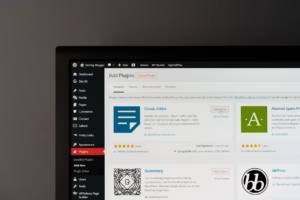Thinking of launching a new website? Don’t rush in. Here’s a simple, step-by-step guide every small business and entrepreneur should follow before building a site.
Why Planning Before the Website Matters
Most SMBs jump straight into design and development. Without a roadmap, you risk:
- Wasting money on the wrong tools
- Ending up with a “pretty but useless” website
- Having to rebuild in 6 months
Think of your website like building a house—you wouldn’t start without a blueprint.
Step 1 – Define Your Business Goals
Ask yourself:
- Do I want more leads?
- Do I want direct online sales?
- Do I want to build brand trust?
Your goals determine design, functionality, and platform choice.
Step 2 – Know Your Target Audience
A website is not about you—it’s about your customers. Create a simple customer profile:
- Who are they?
- What problems do they face?
- What do they need to see on my website to trust me?
This insight drives content and design.
Step 3 – Choose the Right Platform & Hosting
For SMBs, the wrong choice can lead to costly rebuilds later. Examples:
- Want simplicity? WordPress + Page Builder
- Want ecommerce? WooCommerce / Shopify
- Want flexibility + growth? WordPress Block/FSE or Headless
Always balance cost, scalability, and ease of use.
Step 4 – Map Your Content & Structure
Before design, list out what pages you actually need. Example structure:
- Home
- About
- Services / Products
- Blog / Resources
- Contact
Keep it lean but clear. Expand later as the business grows.
Step 5 – Plan for Conversion & Growth
A website should be more than a brochure. Include:
- Strong CTAs (call-to-action)
- Lead capture forms
- Analytics & CRM integration
- SEO strategy baked in
This ensures your site sells, not just shows.
Step 6 – Budget Smartly
Don’t overspend upfront. Your budget should cover:
- Development
- Hosting + maintenance
- Marketing (ads, SEO, content)
Rule of thumb: 30% build, 70% marketing & growth.
Step 7 – Work With the Right Partner
DIY or cheap freelancer sites may look fine at first but often:
- Break under traffic
- Don’t scale
- Lack SEO or CRO strategy
Partnering with a WordPress agency subscription ensures:
- Strategy first
- Professional execution
- Ongoing support & scalability
Final Thoughts
Before you rush into “getting a website,” pause and ask: What do I want this website to achieve in 12 months?
When you invest in planning first, your website becomes a growth engine, not a digital liability.
At WP Sprint, we help SMBs and entrepreneurs start with a blueprint, not guesswork.



